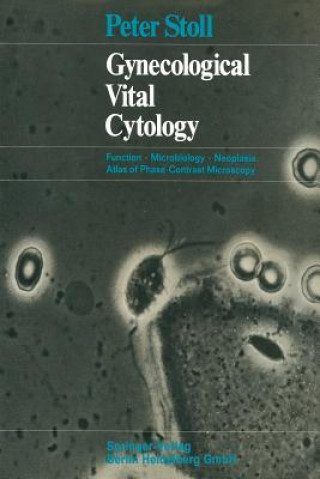
Kód: 02297184
Gynecological Vital Cytology
Autor Peter Stoll, Gisela Dallenbach-Hellweg
In gynecological practice, techniques of examination are being supple mented more and more by cytodiagnosis. Thus it has become necessary to acquaint the gynecologist of the possibilities, use and Iimits of cyto diagnosis. Such is ... celý popis
- Jazyk:
 Němčina
Němčina - Vazba: Brožovaná
- Počet stran: 81
Nakladatelství: Springer-Verlag Berlin and Heidelberg GmbH & Co. KG
- Více informací o knize

1830 Kč

Skladem u dodavatele v malém množství
Odesíláme za 12-15 dnů
Potřebujete více kusů?Máte-li zájem o více kusů, prověřte, prosím, nejprve dostupnost titulu na naši zákaznické podpoře.
Přidat mezi přání
Mohlo by se vám také líbit
-

Lexikon Des Wirtschaftsrechts
1830 Kč -

Schiedsfahigkeit von Organstreitigkeiten bei Aktiengeschaften
2503 Kč -

Crewel
244 Kč -
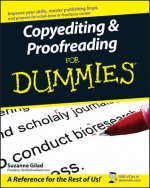
Copyediting and Proofreading for Dummies
483 Kč -

Learning Python with Raspberry Pi
570 Kč -

Rejected Addresses
811 Kč -

Rashi
965 Kč
Darujte tuto knihu ještě dnes
- Objednejte knihu a zvolte Zaslat jako dárek.
- Obratem obdržíte darovací poukaz na knihu, který můžete ihned předat obdarovanému.
- Knihu zašleme na adresu obdarovaného, o nic se nestaráte.
Více informací o knize Gynecological Vital Cytology
Nákupem získáte 183 bodů
 Anotace knihy
Anotace knihy
In gynecological practice, techniques of examination are being supple mented more and more by cytodiagnosis. Thus it has become necessary to acquaint the gynecologist of the possibilities, use and Iimits of cyto diagnosis. Such is the purpose of the book "Gynäkologische Cytologie" (Stall, Jaeger, Dallenbach, Springer-Verlag 1968). In general, the practicing gynecologist will merely make the vaginal, ecto-and endocervical smears and leave the diagnosis of them to a cyto logical laboratory. Only in rare cases will a trained and experienced specialist set up his own cytologicallaboratory for outpatients, although such undertaking would be very desirable for propagating the cyto logical method. The cytological analysis of unstained fresh smears during the gyne cological examination allows an immediate study to be made of micro f!ora and cellular atypia. F or such cytological studies microscopes are employed in which a high-cantrast image of the specimen is obtained by optical means (phase-contrast and interference-contrast microscopy), thereby eliminating the need for fixation and staining. In the nineteen-thirties the Dutch physicist Zernike investigated the formation of high-cantrast images of transparent objects by modifying the path of light. In 1941, his ideas were put into practice by the firm of Carl Zeiss, Jena. Zernike received the Nobel Prize for physics in 1953. The method he had developed proved of great value in biology and in medicine, above all for the examination of living objects. It was intro duced into gynecology by Runge, Vöge, Haselmann and Zinser in 1949.
 Parametry knihy
Parametry knihy
1830 Kč
- Plný název: Gynecological Vital Cytology
- Autor: Peter Stoll, Gisela Dallenbach-Hellweg
- Jazyk:
 Němčina
Němčina - Vazba: Brožovaná
- Počet stran: 81
- EAN: 9783662235805
- ISBN: 3662235803
- ID: 02297184
- Nakladatelství: Springer-Verlag Berlin and Heidelberg GmbH & Co. KG
- Hmotnost: 141 g
- Rozměry: 234 × 156 × 6 mm
Oblíbené z jiného soudku
-

Amigurumis - soft and cosy!
433 Kč -

GND PAW Plüsch 15 cm Everest
366 Kč -

UNO No Mercy
531 Kč -

KLEINE PRINZ
136 Kč -

Trötsch Plüschpuppe Findus Kuscheltier
339 Kč -

Grammatik aktiv - Deutsch als Fremdsprache - 2. aktualisierte Ausgabe - A1-B1
463 Kč -

Harry Potter und der Stein der Weisen (Harry Potter 1)
250 Kč -

Amigurumis - small and sweet!
434 Kč -

Winnetou 1. Teil
1480 Kč -

Mein Kampf(German Language Edition)
652 Kč -

Mit Erfolg zum Goethe-Zertifikat C1
636 Kč -

Disney Rapunzel (Puzzle)
362 Kč -

Jujutsu Kaisen - Band 19
178 Kč -

Grammatik aktiv
497 Kč -
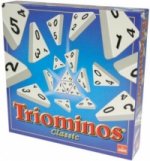
Triominos Classic
433 Kč -
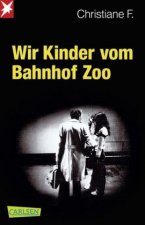
Wir Kinder vom Bahnhof Zoo
262 Kč -

PAW PATROL Ryder Plüsch, 20 cm
299 Kč -

Avocado Smash
271 Kč -

GND PAW Plüsch 23 cm Skye
439 Kč -

GND PAW Plüsch 15cm Tracker
303 Kč -

Mit Erfolg zum Goethe C1. Testbuch + online
636 Kč -

Deutsch intensiv Wortschatz C1
449 Kč -

Schritte plus Neu 1
582 Kč -

Meine Reise durch Europa
320 Kč -

Duden 12+: Kennst du das? Meine bunte Kinderwelt (Würfel)
230 Kč -
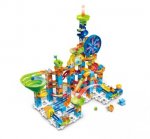
Marble Rush - Ultimate Set XL100 E
1754 Kč -

Beste Freunde Arbeitsbuch A1.2 mit Audio-CD
260 Kč -

Momente A2.2: Kursbuch plus interaktive Version
224 Kč -

Momente A2.2. Arbeitsbuch plus interaktive Version
224 Kč -

GDH Deluxe Room Cakeys Küche
728 Kč -

Spektrum Deutsch A2+: Integriertes Kurs- und Arbeitsbuch für Deutsch als Fremdsprache
729 Kč -

Mein Kampf(German Language Edition)
888 Kč -

Im Westen nichts Neues
310 Kč -

Deutsch für clevere Kids - 5 Wörter am Tag
410 Kč -

Super! 2/A2: učebnice a pracovní sešit + CD zdarma
465 Kč -

Auto-Katalog 2024
351 Kč -

Tarot-Kartenset: Magic Soul Tarot
572 Kč -

Tempo, kleine Fische!
253 Kč -

My Rummy
546 Kč -

Projekt C1 neu: Lehrerbuch mit Audios online
1092 Kč -

Deutsch Großes Übungsbuch Wortschatz aktuell A2-C1. Buch
785 Kč -

Geheim-Codes
294 Kč -

Clever 4ever, Challenge Block, 12 Stück
146 Kč -

Insel der blauen Delphine
198 Kč -

Der Vorleser
310 Kč -

Alpe Adria Radweg
449 Kč -

Hitster - Summer Party
589 Kč -

Prüfungstraining DaF - C1
622 Kč -
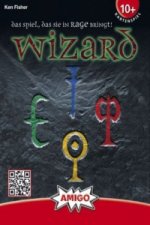
Wizard
215 Kč
Osobní odběr Praha, Brno a 12903 dalších
Copyright ©2008-24 nejlevnejsi-knihy.cz Všechna práva vyhrazenaSoukromíCookies


 Vrácení do měsíce
Vrácení do měsíce 571 999 099 (8-15.30h)
571 999 099 (8-15.30h)